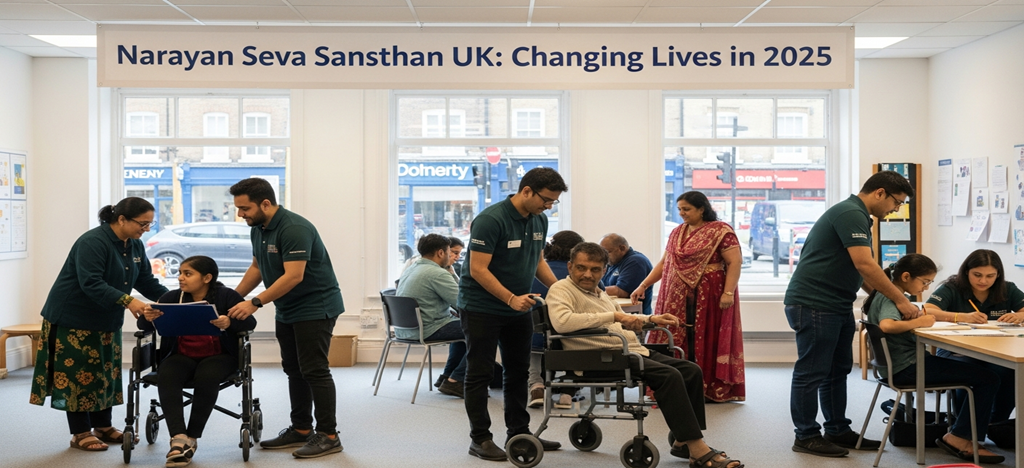In the era of rapid technological advancement, 5G technology emerges as a transformative force across various sectors, particularly healthcare including corrective surgery and many more. With its unprecedented speed, low latency, and reliability, 5G holds immense potential to revolutionize medical services, enhancing efficiency, accessibility, and patient outcomes.
This article explores the profound impact of 5G on healthcare delivery and discusses how NGOs like Narayan Seva Sansthan can leverage this technology to amplify their impact and reach.
Understanding 5G Technology
What is 5G?
5G represents the fifth generation of wireless technology, offering significantly faster data speeds, lower latency (the time it takes for devices to communicate with each other over the network), and increased capacity compared to its predecessors. These capabilities pave the way for a host of innovative applications across industries, including healthcare.
Transforming Healthcare with 5G
Telemedicine and Remote Consultations
One of the most promising applications of 5G in healthcare is telemedicine. With its high-speed, low-latency connectivity, 5G enables seamless real-time video consultations between healthcare providers and patients, regardless of their geographical location. This capability is particularly crucial for NGOs like Narayan Seva Sansthan, which serve remote or underserved communities. Patients can now receive expert medical advice and care without the need to travel long distances, thereby improving access to healthcare services.
IoT and Wearable Devices
The Internet of Things (IoT) ecosystem powered by 5G allows for the interconnection of medical devices and wearable sensors. These devices can continuously monitor patients’ vital signs and health metrics in real-time, providing valuable data to healthcare professionals. NGOs can leverage wearable technology integrated with 5G to remotely monitor patients with chronic conditions, ensuring early intervention and personalized care plans.
Surgical Precision with Augmented Reality (AR) and Virtual Reality (VR)
5G’s high bandwidth and low latency are also instrumental in enhancing surgical procedures through Augmented Reality (AR) and Virtual Reality (VR). Surgeons can use AR overlays and VR simulations powered by 5G to visualize complex surgical procedures with unprecedented accuracy and precision. NGOs can collaborate with medical professionals and technology providers to deploy 5G-enabled AR/VR solutions, facilitating advanced surgical training and remote surgical assistance in resource-limited settings.
Enhancing NGO Services with 5G
Improving Healthcare Access in Remote Areas
For NGOs operating in remote or rural areas, 5G technology offers a game-changing opportunity to bridge healthcare disparities. By establishing 5G-enabled telemedicine centers or mobile clinics, NGOs like Narayan Seva Sansthan can extend their reach and provide essential healthcare services to underserved communities. This approach not only improves access to medical expertise but also reduces healthcare costs and enhances overall health outcomes.
Remote Patient Monitoring
5G facilitates continuous remote monitoring of patients’ health parameters, such as heart rate, blood pressure, and glucose levels, through IoT-enabled devices. NGOs can implement remote patient monitoring programs powered by 5G, enabling proactive disease management and personalized interventions for patients with chronic illnesses. Real-time data transmission ensures timely medical interventions and reduces the burden on healthcare facilities.
Capacity Building and Training
NGOs can leverage 5G technology to enhance capacity building and training programs for healthcare professionals and volunteers. Through virtual reality simulations and remote training sessions powered by 5G, NGOs can offer immersive learning experiences and hands-on training in medical procedures and healthcare management. This approach not only improves the skills and competencies of healthcare providers but also ensures standardized healthcare practices across diverse settings.
Overcoming Challenges and Considerations
Infrastructure and Investment
While 5G holds immense promise for healthcare transformation, its widespread adoption requires significant investment in infrastructure development and network deployment. NGOs must collaborate with telecommunications providers, technology partners, and governmental agencies to overcome infrastructure challenges and ensure reliable 5G connectivity in healthcare settings.
Data Privacy and Security
The adoption of 5G in healthcare necessitates robust data privacy and security measures to safeguard patients’ sensitive medical information. NGOs must adhere to stringent regulatory guidelines and implement encryption protocols to protect data integrity and confidentiality in 5G-enabled healthcare ecosystems.
Case Studies and Success Stories
Examples of NGOs Using 5G in Healthcare
Several pioneering NGOs and healthcare organizations have already embraced 5G technology to enhance their service delivery and impact. For instance, many NGO’s has successfully implemented 5G-powered telemedicine initiatives in rural communities, resulting in improved healthcare access and patient satisfaction. These case studies underscore the transformative potential of 5G in healthcare and inspire other NGOs to explore innovative solutions.
The Future of Healthcare with 5G
Emerging Trends and Innovations
Looking ahead, the future of healthcare with 5G holds promise for further innovations and advancements. Emerging trends such as remote robotic surgeries, AI-driven diagnostics, and personalized medicine powered by 5G are poised to redefine healthcare delivery and improve patient outcomes globally. NGOs like Narayan Seva Sansthan can continue to innovate and collaborate with technology partners to harness the full potential of 5G in advancing their humanitarian missions.
Conclusion
In conclusion, 5G technology represents a transformative catalyst for healthcare innovation, offering unprecedented opportunities to improve medical services, enhance patient care, and empower underserved communities. NGOs like Narayan Seva Sansthan can play a pivotal role in leveraging 5G to bridge healthcare gaps, promote health equity, and create sustainable impact. By embracing 5G-enabled solutions, NGOs can pave the way for a future where healthcare is accessible, affordable, and inclusive for all.








